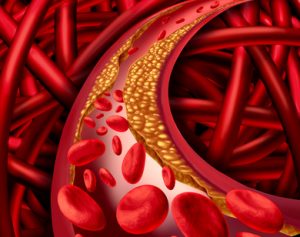According to the Centers for Disease Control and Prevention, 73.5 million adults in the United States have LDL or bad cholesterol. This accounts for 31.7% of the population. Furthermore, less than 29.5% of the adults with LDL cholesterol have their condition under control. Individuals with high total cholesterol have twice the risk for heart disease compared to adults with ideal cholesterol levels. Also, high cholesterol levels put you at a higher risk for a wide array of diseases, and it’s needless to mention how it goes hand in hand with overweight and obesity. Due to the fact that cholesterol is largely misunderstood, the purpose of this article is to discuss its causes and dangers, and to reveal whether bioresonance can be effective in its management.

Understanding cholesterol?
Cholesterol is defined as a type of lipid (fat) present in the blood. Body cells require cholesterol to function properly, and that’s why the body produces it on its own, but diet is also a major source of cholesterol. Having an excessive amount of cholesterol in the blood is defined as high cholesterol. When this happens, cholesterol starts building up in the arteries. This buildup narrows the lumen of the arteries, which makes it more difficult for the blood to flow through them. Multiple negative consequences can occur due to the hardening of the arteries. These repercussions include inflammation and blood clots that eventually lead to stroke or heart attack.
LDL vs. HDL cholesterol
As mentioned above, cholesterol is largely misunderstood, and that’s why most people don’t realize that not all cholesterol is bad. There are two types of cholesterol: LDL and HDL.
According to the American Heart Association, LDL is ‘bad’ cholesterol due to the fact that it contributes to plaque. On the other hand, HDL is ‘good’ cholesterol because it helps remove LDL cholesterol from the arteries.
Healthy levels of HDL cholesterol help in the protection against heart attack and stroke, while LDL increases the risk of these cardiovascular diseases.
Causes of high cholesterol
There are numerous factors that contribute to high cholesterol rather than a single cause. Here are the most common factors associated with this condition:
- Poor diet – eating too much saturated and trans fats can have a significant impact on high cholesterol
- Weight – being overweight puts you at a higher risk of high cholesterol and vice versa. Due to excessive weight, levels of triglycerides may increase, thus decreasing HDL cholesterol
- Sedentary lifestyle – lack of physical activity is yet another factor that increases LDL levels while decreasing HDL levels of cholesterol at the same time
- Age – after the age of 20, cholesterol levels start increasing naturally
- Diseases – liver diseases, diabetes, chronic kidney disease, hypothyroidism and many other illnesses can contribute to high cholesterol
- Genetics – if your parents have high cholesterol levels, the chances are high that you will too
- Smoking – this bad habit isn’t only bad for your skin and lungs, but for your HDL cholesterol as well
- Medications – some medications increase he levels of triglycerides, thus lowering HDL
Treating high cholesterol
Besides the medications prescribed by your doctor, there are many things you can do to regulate cholesterol levels, such as:
- Eating a well-balanced diet
- Exercising
- Choosing healthier fats
- Avoiding trans fats
- Eating whole grains
- Losing weight
- Managing any underlying medical condition
- Quitting smoking
- Consuming plenty of fish and seafood
- Including an abundance of fruits and vegetables in your diet
- Limiting alcohol intake
Can bioresonance help?
Bioresonance therapy is a type of alternative medical practice which uses electromagnetic waves to diagnose and treat various illnesses, ailments and conditions. If you’re looking for an method to help you with your medical problem, bioresonance might be a good option.
Using bioresonance therapy to treat high cholesterol is a part of the naturopathic view i.e. combating cholesterol in a completely natural manner without medications.
This treatment includes:
- Cleansing the liver
- Using BICOM device to kill the parasites
- Improving blood flow
- Stabilizing the vessel walls
This simple method has a high success rate of 90%, and the course of treatment lasts between 6 and 12 weeks. The process aims to “unclog” the liver, thus decreasing the levels of LDL and increasing those of HDL cholesterol.
BICOM therapy is an extremely important part of the naturopathic approach, and it’s usually performed after the patient has been well adjusted. It includes the following measures:
- Liver detox
- Testing and treating parasites
- Statins
- Improving intestinal wall lymph
- Testing and treating intestinal flora
- Metabolism programs
Conclusion
High cholesterol is one of the fastest-growing health problems nowadays, and it affects millions of people. This problem is associated with an increased risk of numerous diseases, which is why it’s important to address this problem properly and learn how to manage cholesterol levels. Besides the lifestyle adjustments you can make, you can also manage cholesterol levels through the naturopathic approach which is an all-natural way of improving your health by detoxifying your liver. The naturopathic approach includes effective bioresonance therapy which uses electromagnetic waves and frequencies to help improve health.

